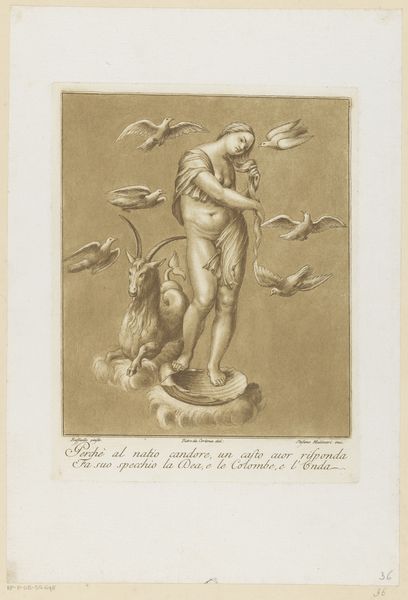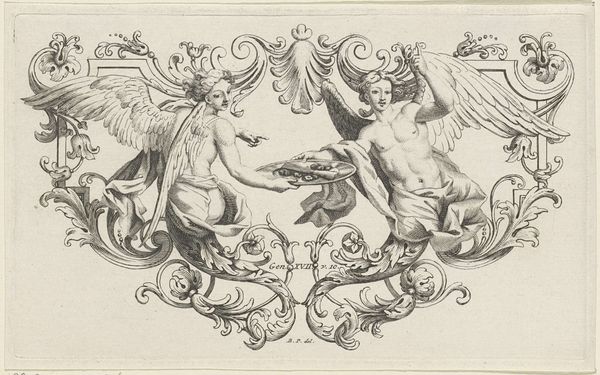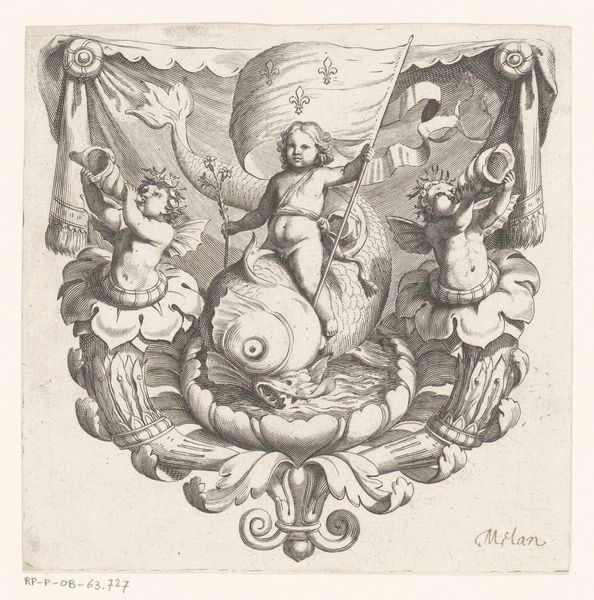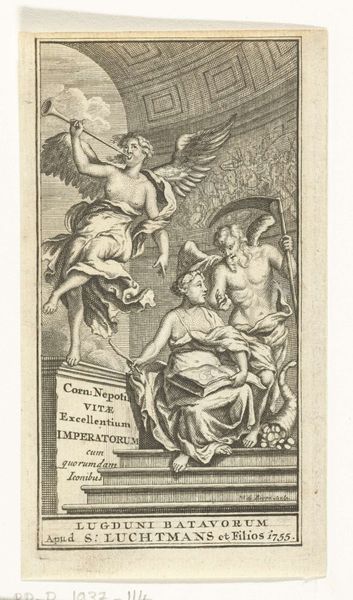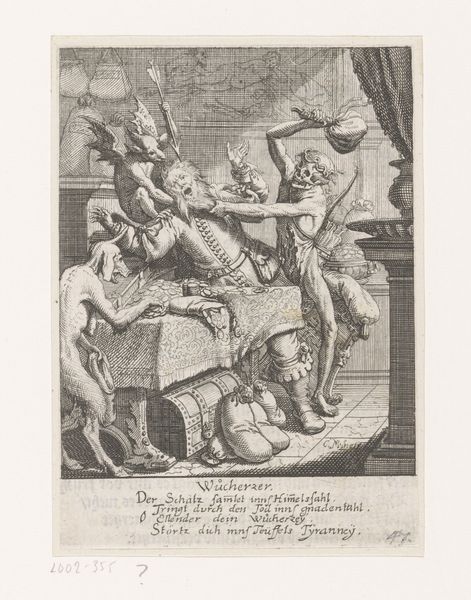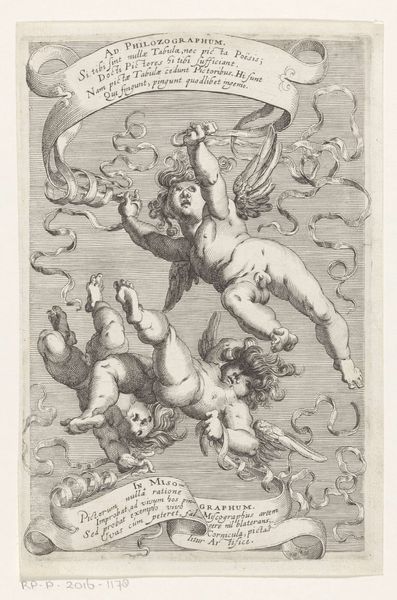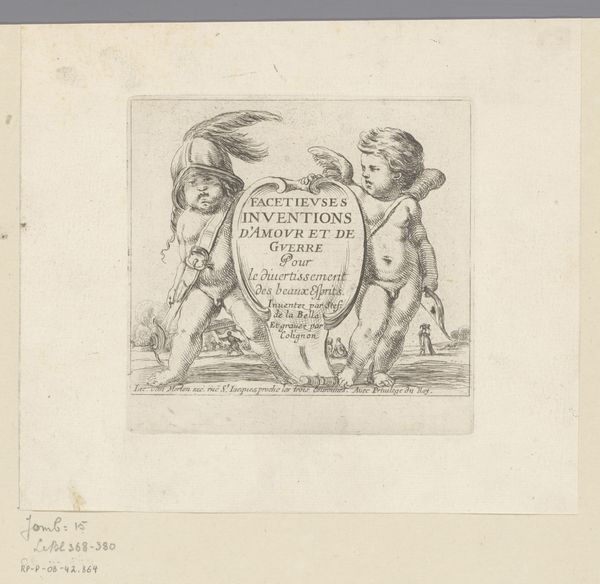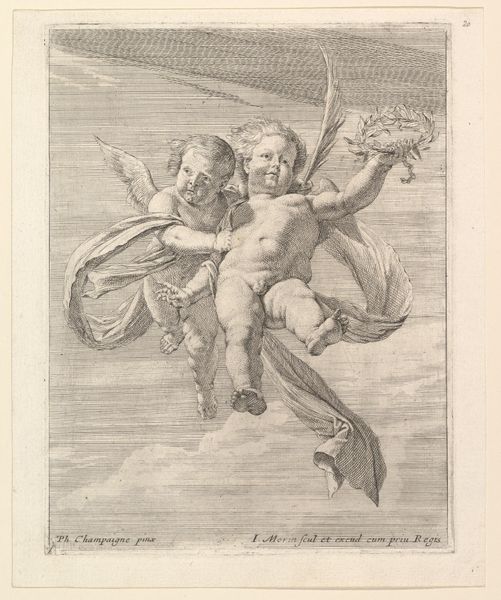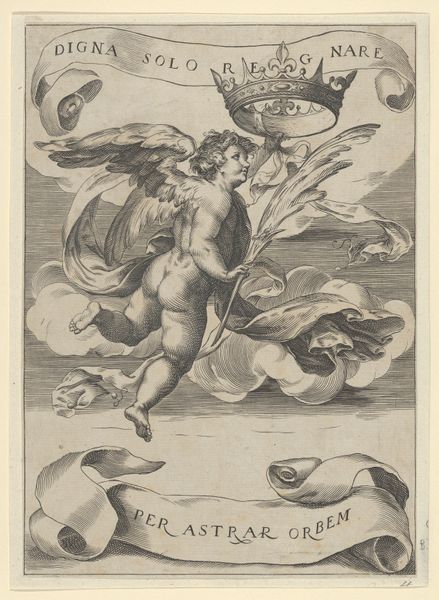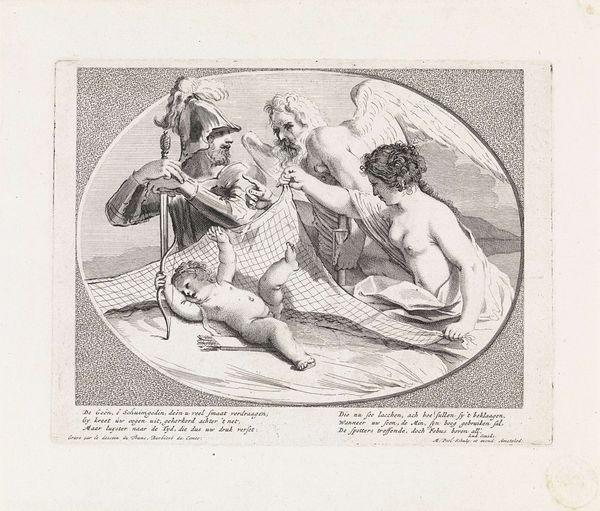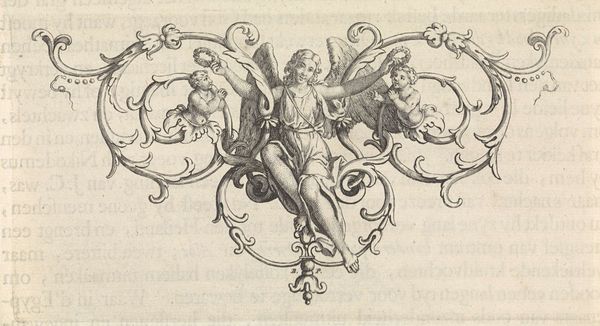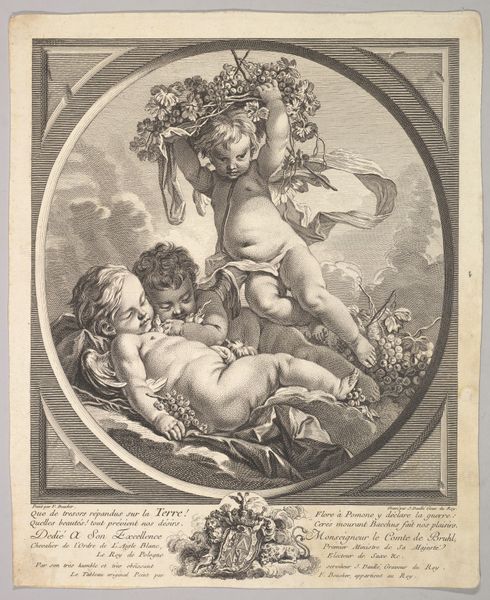
Twee liefdesgodjes (Amor) door een lint met elkaar verbonden 1590 - 1633
0:00
0:00
engraving
#
allegory
#
baroque
#
old engraving style
#
figuration
#
line
#
history-painting
#
engraving
Dimensions: height 112 mm, width 114 mm
Copyright: Rijks Museum: Open Domain
This print depicting two love gods joined by a ribbon was made by Boëtius Adamsz. Bolswert. It's an engraving, meaning the image was incised into a metal plate, likely copper, with a tool called a burin. Ink was then applied to the plate, and the surface wiped clean, leaving ink only in the incised lines. Finally, paper was pressed against the plate to transfer the image. The precision of engraving allowed for intricate details and fine lines, visible in the cherubs' hair and feathers. Notice how the varying depths and densities of the lines create tonal variations, suggesting volume and texture. This print wasn't made for mass consumption; rather, it reflects a tradition of skilled craftsmanship and artistic labor, where time and precision were valued. Consider the social context: prints like this circulated among educated elites, embodying ideals of love and beauty while also showcasing the engraver's technical skill. This challenges distinctions between art and craft, highlighting the artistry inherent in skilled reproduction.
Comments
No comments
Be the first to comment and join the conversation on the ultimate creative platform.
